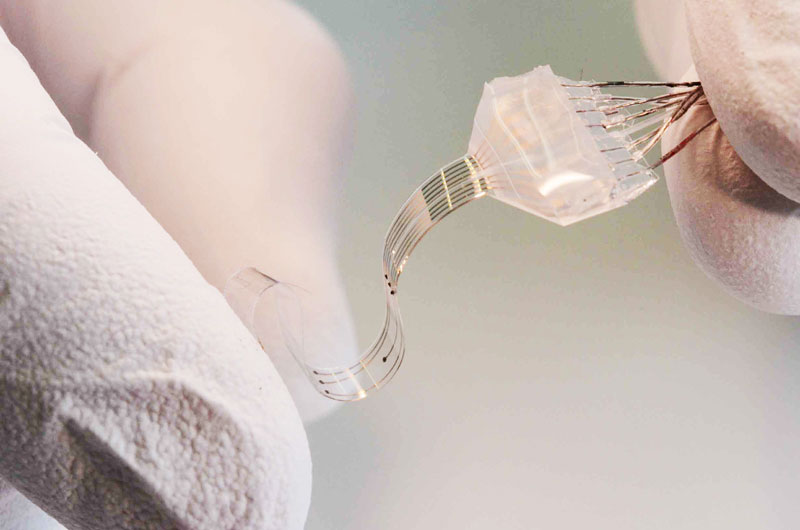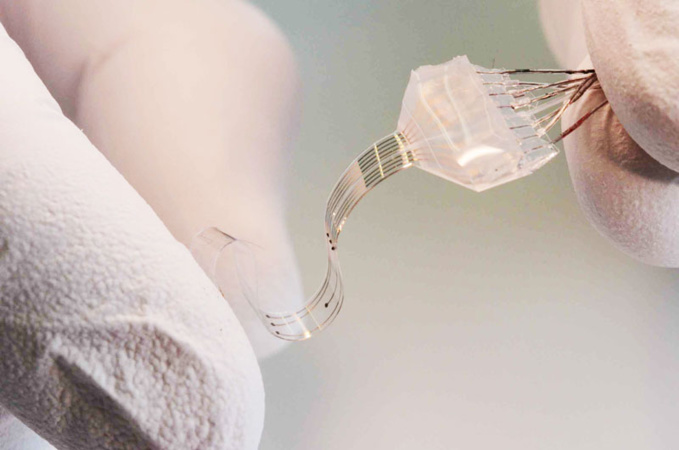In 2012 the scientists indicated how electrical-substance incitement could restore lower body development in rats with spinal rope wounds. They demonstrated that a disjoined segment of the spinal string can recover its utilization when a rodent's intrinsic knowledge and regenerative limit is stirred with a treatment of chemicals. The researchers then animated the spinal rope with terminals embedded in the furthest layer of the spinal waterway, called the epidural space. They found that an empowered rodent spinal segment, physically disengaged from the mind, began taking once again the undertaking of balancing leg development, permitting already incapacitated rats to walk, but automatically.
"By joining this electro-compound incitement of the spinal rope tissue we then tried whether we could then restore motion in the rear appendages. What's more, this is the thing that we found. Without a doubt we can - utilizing this innovation - we were capable over weeks of time to animate the spinal rope in spinal string harmed creatures and permit then to walk," clarified Professor Stéphanie Lacour, co-creator of the learn at the Swiss Federal Institute of Technology in Lausanne.
Be that as it may, applying these supposed 'surface inserts' to people introduced a large group of issues. By applying them specifically to the spinal rope, any development or extending of the nerve tissues would bring about the insert to rub, with rehashed erosion prompting aggravation, construct up of scar tissue and, eventually, dismissal of the insert. Lacour, who is driving the examination close by study co-creator Grégoire Courtine, said they expected to concoct a more feasible material.
"To characterize regardless of whether the delicate quality of the mechanical consistence of the gadget mattered regarding its long haul incorporation with the tissue. Since one vital part of our studies is that we outline the insert so that it could, one day, be utilized as a part of a restorative connection. So we needed an insert that could stay for a long while in vivo without affecting any adverse impact. Thus the first question we asked was: is delicate having any kind of effect?" she said.
The delicate and stretchy model gadget was composed and based on location. The silicon substrate is secured with gold electric leading tracks, with the cathodes produced using a composite of silicon and platinum microbeads. A little microchannel empowers the conveyance of medications - for this situation, neurotransmitters that vivify the nerve cells underneath the harmed tissue.
"We embedded the gadget subdurally; so just underneath the characteristic skin that ensures the spinal string, so that we could be at the extremely surface of the spinal line. And after that we utilized this to fortify electrically, furthermore artificially. Also, we added to the insert a little course, similar to a small scale channel where we could convey likewise medications," said Lacour.
Embedded underneath the dura mater, specifically onto the spinal rope, the flexible e-Dura model can be twisted and distorted precisely like the living tissue that encompasses it. At the point when the model was embedded into rats it brought on neither harm nor dismissal, even following two months.
Lacour included that one of e-Dura's special properties is the inserted metallic terminals that can be twisted and extended without breaking: "The advancement in e-Dura is that the metallic track can likewise withstand a vast disfigurement. So we have stretchable metal coordinated in e-Dura."
While the group is certain the innovation can be effectively embedded without dismissal, the spinal string of the incapacitated rodent is at present animated from an outer source, with no relationship between the its cerebrum and spine. Lacour yields this is the following obstacle to succeed: "There's no connection right now between the mind; so the engine summon between the cerebrum and the real incitement design on the spinal string. So we now additionally need to figure out how to connection the two so that the individual will consider moving and, without a doubt, the incitement will be synchronized.
References:
http://www.reuters.com/article/2015/06/12/us-switzerland-e-dura-spinal-implant-idUSKBN0OS11X20150612
"By joining this electro-compound incitement of the spinal rope tissue we then tried whether we could then restore motion in the rear appendages. What's more, this is the thing that we found. Without a doubt we can - utilizing this innovation - we were capable over weeks of time to animate the spinal rope in spinal string harmed creatures and permit then to walk," clarified Professor Stéphanie Lacour, co-creator of the learn at the Swiss Federal Institute of Technology in Lausanne.
Be that as it may, applying these supposed 'surface inserts' to people introduced a large group of issues. By applying them specifically to the spinal rope, any development or extending of the nerve tissues would bring about the insert to rub, with rehashed erosion prompting aggravation, construct up of scar tissue and, eventually, dismissal of the insert. Lacour, who is driving the examination close by study co-creator Grégoire Courtine, said they expected to concoct a more feasible material.
"To characterize regardless of whether the delicate quality of the mechanical consistence of the gadget mattered regarding its long haul incorporation with the tissue. Since one vital part of our studies is that we outline the insert so that it could, one day, be utilized as a part of a restorative connection. So we needed an insert that could stay for a long while in vivo without affecting any adverse impact. Thus the first question we asked was: is delicate having any kind of effect?" she said.
The delicate and stretchy model gadget was composed and based on location. The silicon substrate is secured with gold electric leading tracks, with the cathodes produced using a composite of silicon and platinum microbeads. A little microchannel empowers the conveyance of medications - for this situation, neurotransmitters that vivify the nerve cells underneath the harmed tissue.
"We embedded the gadget subdurally; so just underneath the characteristic skin that ensures the spinal string, so that we could be at the extremely surface of the spinal line. And after that we utilized this to fortify electrically, furthermore artificially. Also, we added to the insert a little course, similar to a small scale channel where we could convey likewise medications," said Lacour.
Embedded underneath the dura mater, specifically onto the spinal rope, the flexible e-Dura model can be twisted and distorted precisely like the living tissue that encompasses it. At the point when the model was embedded into rats it brought on neither harm nor dismissal, even following two months.
Lacour included that one of e-Dura's special properties is the inserted metallic terminals that can be twisted and extended without breaking: "The advancement in e-Dura is that the metallic track can likewise withstand a vast disfigurement. So we have stretchable metal coordinated in e-Dura."
While the group is certain the innovation can be effectively embedded without dismissal, the spinal string of the incapacitated rodent is at present animated from an outer source, with no relationship between the its cerebrum and spine. Lacour yields this is the following obstacle to succeed: "There's no connection right now between the mind; so the engine summon between the cerebrum and the real incitement design on the spinal string. So we now additionally need to figure out how to connection the two so that the individual will consider moving and, without a doubt, the incitement will be synchronized.
References:
http://www.reuters.com/article/2015/06/12/us-switzerland-e-dura-spinal-implant-idUSKBN0OS11X20150612



















